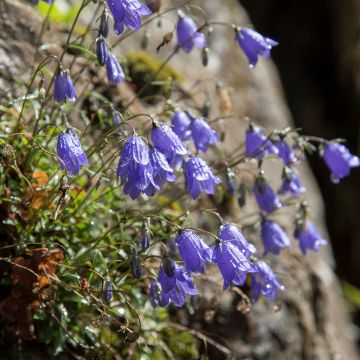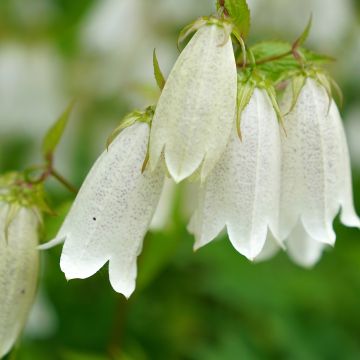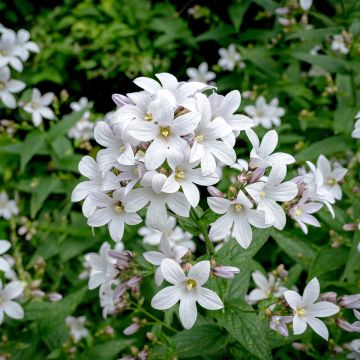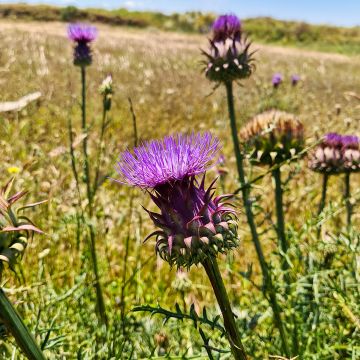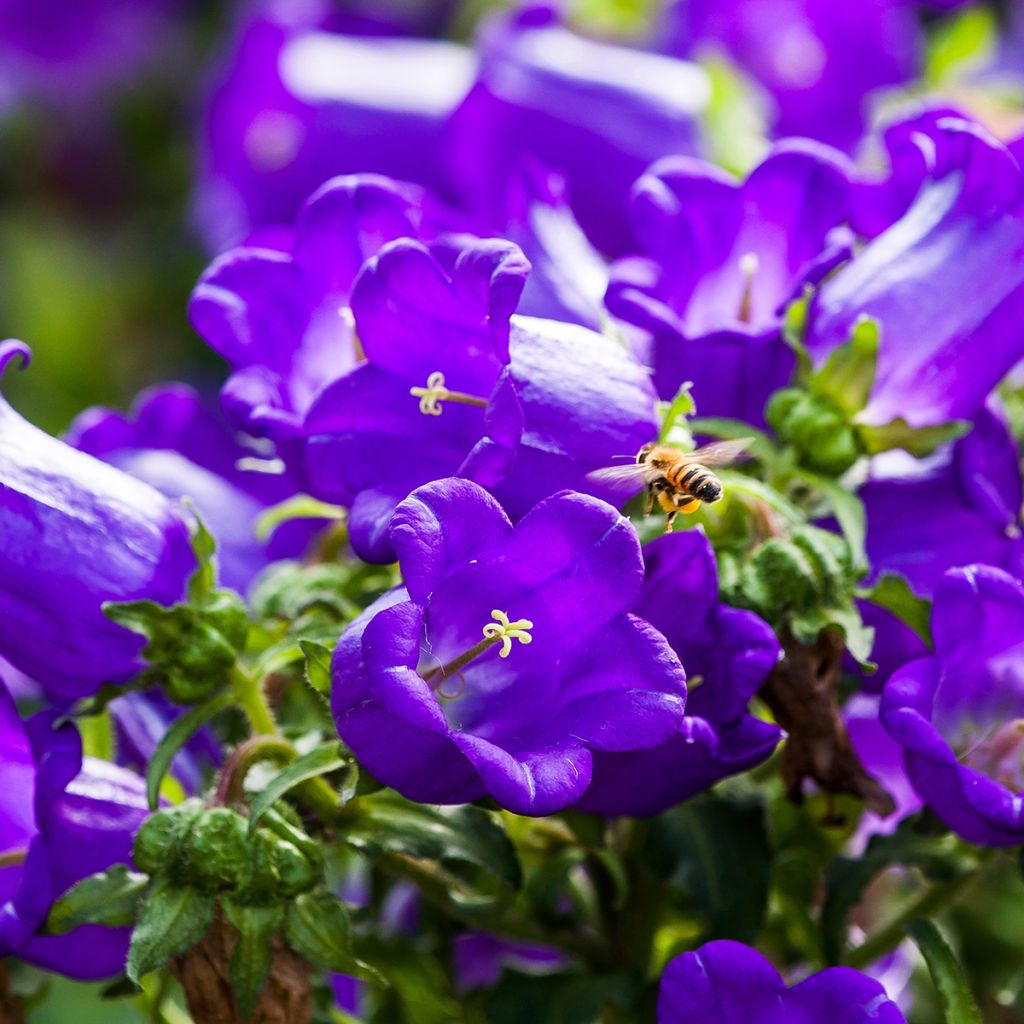

Campanula medium blue-flowered


Campanula medium blue-flowered


Campanula medium blue-flowered


Campanula medium blue-flowered


Campanula medium blue-flowered


Campanula medium blue-flowered
Campanula medium blue-flowered
Campanula medium Bleue
Canterbury Bells
This item cannot be shipped to the selected country
Delivery charge from €5.90
Delivery charge from €5.90
More information
Schedule delivery date,
and select date in basket
This plant carries a 12 months recovery warranty
More information
We guarantee the quality of our plants for a full growing cycle, and will replace at our expense any plant that fails to recover under normal climatic and planting conditions.
From €5.90 for pickup delivery and €6.90 for home delivery
Express home delivery from €8.90.
From €5.90 for pickup delivery and €6.90 for home delivery
Express home delivery from €8.90.
Does this plant fit my garden?
Set up your Plantfit profile →
Description
Campanula medium blue-flowered, also known as the Canterbury bells or bellflower, is a plant that is more biennial than perennial, but in either case, it is a beautiful wildflower with spectacular flowering. Taking its time to establish, it has bell-shaped, single flowers, of a candid blue-violet carried by sturdy stems in late spring or early summer. Undemanding and fully hardy, this plant native to the southern regions of Europe easily establishes itself in the garden, even in woodlands and rocky slopes. It is an ideal plant for shady, wild areas and its flowers last a long time in bouquets.
Also known as the great bellflower or Canterbury bells in the UK, this beautiful ornamental plant belongs to the family of bellflowers. It is a widespread wild species in our woods and rocky fields. This sturdy biennial plant with a thick and hard root adapts to difficult growing conditions and offers remarkable summer flowering that lasts from May to July depending on the climate. The first year it produces a basal rosette composed of narrow, ovate-lanceolate, dark green leaves. The second or third year sees the emergence of strong, solid, round stems, about 80 cm (32in) in height, which do not generally require staking. They bear large, single bell-shaped flowers, 3 to 6 cm (1 to 2in) long and slightly hairy, gracefully drooping, with rolled-up edges, somewhat resembling the flowers of climbing cobaea. Often blue-violet in the species, they adopt a wide range of colours, ranging from white to pink, and various shades of blue, depending on the cultivars.
The Campanula medium is above all a beautiful wild plant, perfectly adapted to most climates, which contributes to the biodiversity of our gardens. As such, it has a place in a natural flowerbed, in a rather semi-shaded position, where one does not mind it spreading. It will be perfect in the company of other beautiful wildflowers: mulleins, Spanish lavender (Centranthus ruber), wild chicory, sainfoin, purple coneflower, fennel, field scabious, meadowsweet, hemp-nettle, perennial sweet peas, or lady's mantle. Its simplicity works well alongside the roundness of old roses and softens the heavy corollas of very red peonies. Its flowers will remain beautiful for several days in a vase when picked. This allows for wonderful wild bouquets by combining them with foxgloves, for example.
About bellflowers:
In bellflowers, the root grows white stolons that spread underground in all directions. They ensure the long-term perenniality of the plant. The numerous upright stems that arise from this root or stolons are either fertile or sterile. Thus, when one sees a large population of bellflowers, there is often only the clone of a single individual. On the other hand, different species of bellflowers hybridize very easily with each other and are often accompanied by a whole range of intermediate forms, which makes them very interesting for horticulturists.
Report an error about the product description
Campanula medium blue-flowered in pictures


Flowering
Foliage
Plant habit
Botanical data
Campanula
medium
Bleue
Campanulaceae
Canterbury Bells
Mediterranean
Other Campanula - Bell Flower
Planting and care
Campanula medium is satisfied with any well-prepared ordinary soil and will even grow between rocks. Its only requirement is that the soil remains fairly moist during its flowering period; it also adapts its vegetative cycle to the surrounding climate, blooming earlier in the south to escape summer drought. You can plant it in non-scorching sunlight, or preferably in part shade, sheltered from strong winds that damage the flowers and bend the stems. This truly easy-to-grow perennial does not appreciate overly humid climates but tolerates limestone and clay soils well, even dry when it is no longer in bloom. It self-seeds spontaneously in the garden, in light soil.
Planting period
Intended location
Care
-
, onOrder confirmed
Reply from on Promesse de fleurs
Summer flowering perennials
Haven't found what you were looking for?
Hardiness is the lowest winter temperature a plant can endure without suffering serious damage or even dying. However, hardiness is affected by location (a sheltered area, such as a patio), protection (winter cover) and soil type (hardiness is improved by well-drained soil).

Photo Sharing Terms & Conditions
In order to encourage gardeners to interact and share their experiences, Promesse de fleurs offers various media enabling content to be uploaded onto its Site - in particular via the ‘Photo sharing’ module.
The User agrees to refrain from:
- Posting any content that is illegal, prejudicial, insulting, racist, inciteful to hatred, revisionist, contrary to public decency, that infringes on privacy or on the privacy rights of third parties, in particular the publicity rights of persons and goods, intellectual property rights, or the right to privacy.
- Submitting content on behalf of a third party;
- Impersonate the identity of a third party and/or publish any personal information about a third party;
In general, the User undertakes to refrain from any unethical behaviour.
All Content (in particular text, comments, files, images, photos, videos, creative works, etc.), which may be subject to property or intellectual property rights, image or other private rights, shall remain the property of the User, subject to the limited rights granted by the terms of the licence granted by Promesse de fleurs as stated below. Users are at liberty to publish or not to publish such Content on the Site, notably via the ‘Photo Sharing’ facility, and accept that this Content shall be made public and freely accessible, notably on the Internet.
Users further acknowledge, undertake to have ,and guarantee that they hold all necessary rights and permissions to publish such material on the Site, in particular with regard to the legislation in force pertaining to any privacy, property, intellectual property, image, or contractual rights, or rights of any other nature. By publishing such Content on the Site, Users acknowledge accepting full liability as publishers of the Content within the meaning of the law, and grant Promesse de fleurs, free of charge, an inclusive, worldwide licence for the said Content for the entire duration of its publication, including all reproduction, representation, up/downloading, displaying, performing, transmission, and storage rights.
Users also grant permission for their name to be linked to the Content and accept that this link may not always be made available.
By engaging in posting material, Users consent to their Content becoming automatically accessible on the Internet, in particular on other sites and/or blogs and/or web pages of the Promesse de fleurs site, including in particular social pages and the Promesse de fleurs catalogue.
Users may secure the removal of entrusted content free of charge by issuing a simple request via our contact form.
The flowering period indicated on our website applies to countries and regions located in USDA zone 8 (France, the United Kingdom, Ireland, the Netherlands, etc.)
It will vary according to where you live:
- In zones 9 to 10 (Italy, Spain, Greece, etc.), flowering will occur about 2 to 4 weeks earlier.
- In zones 6 to 7 (Germany, Poland, Slovenia, and lower mountainous regions), flowering will be delayed by 2 to 3 weeks.
- In zone 5 (Central Europe, Scandinavia), blooming will be delayed by 3 to 5 weeks.
In temperate climates, pruning of spring-flowering shrubs (forsythia, spireas, etc.) should be done just after flowering.
Pruning of summer-flowering shrubs (Indian Lilac, Perovskia, etc.) can be done in winter or spring.
In cold regions as well as with frost-sensitive plants, avoid pruning too early when severe frosts may still occur.
The planting period indicated on our website applies to countries and regions located in USDA zone 8 (France, United Kingdom, Ireland, Netherlands).
It will vary according to where you live:
- In Mediterranean zones (Marseille, Madrid, Milan, etc.), autumn and winter are the best planting periods.
- In continental zones (Strasbourg, Munich, Vienna, etc.), delay planting by 2 to 3 weeks in spring and bring it forward by 2 to 4 weeks in autumn.
- In mountainous regions (the Alps, Pyrenees, Carpathians, etc.), it is best to plant in late spring (May-June) or late summer (August-September).
The harvesting period indicated on our website applies to countries and regions in USDA zone 8 (France, England, Ireland, the Netherlands).
In colder areas (Scandinavia, Poland, Austria...) fruit and vegetable harvests are likely to be delayed by 3-4 weeks.
In warmer areas (Italy, Spain, Greece, etc.), harvesting will probably take place earlier, depending on weather conditions.
The sowing periods indicated on our website apply to countries and regions within USDA Zone 8 (France, UK, Ireland, Netherlands).
In colder areas (Scandinavia, Poland, Austria...), delay any outdoor sowing by 3-4 weeks, or sow under glass.
In warmer climes (Italy, Spain, Greece, etc.), bring outdoor sowing forward by a few weeks.


































